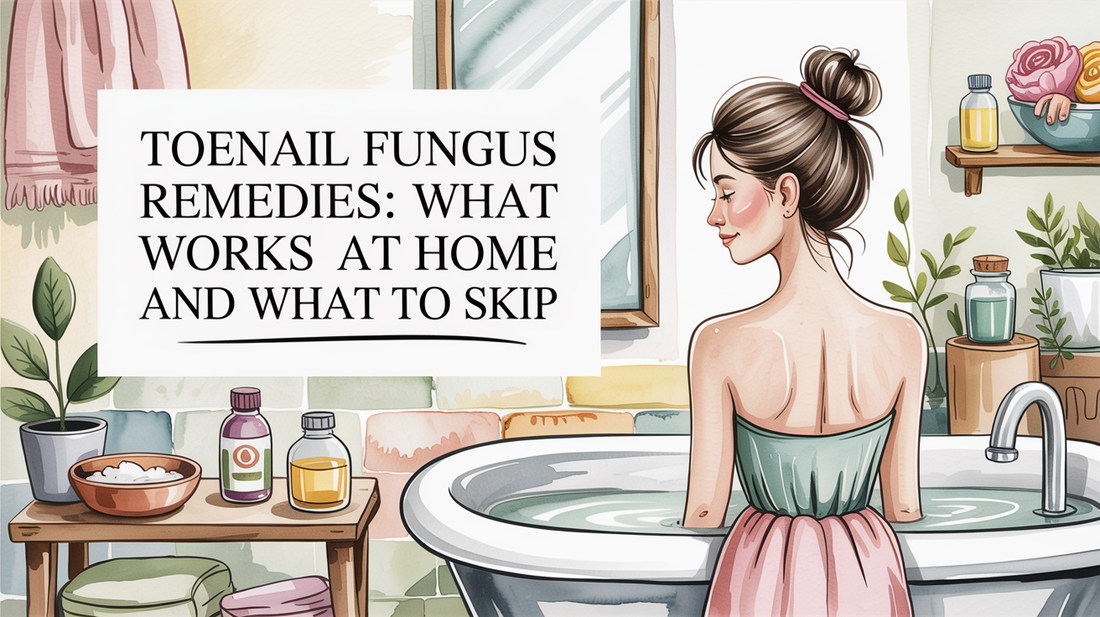Toenail Fungus Remedies: What Works at Home and What to Skip
toenail fungus remedies, best home remedy for toenail fungus, natural antifungal foot care — Toenail fungus is a common issue affecting many individuals, leading them to seek solutions at home. In this post, we’ll explore effective remedies and practices for tackling toenail fungus, emphasizing what truly works and what might not be worth your time. Our discussion is organized into three clear sections, guiding you through actionable steps to improve your foot health tonight.
Sorting Facts from Fads in Toenail Fungus Remedies 🧭
Toenail fungus, or onychomycosis, is a concern for millions, with many seeking relief through various methods. Unfortunately, not all remedies are based on solid evidence. While some home solutions are popular, they may not be effective and could waste your time and resources. Understanding the difference between myth and fact is essential for finding the right approach.
Research indicates that toenail fungus affects 10-20% of adults, becoming more prevalent with age. Many people turn to unproven remedies like bleach soaks, hydrogen peroxide, and Listerine foot baths, which lack scientific support. On the other hand, natural antifungals such as tea tree oil and oregano oil have shown promise in studies.
- Toenail fungus is common among adults, especially as they age.
- Popular home remedies often lack evidence and effectiveness.
- Natural antifungals like tea tree oil and oregano oil may offer support.
- Over-the-counter treatments with undecylenic acid can be moderately effective.
- Severe cases may need prescription medication from a healthcare provider.
Try It Tonight: Calm, Fresh Feet ✨
- Wash feet using warm water and a mild cleanser; ensure you dry thoroughly between your toes.
- Apply a small amount of Kissable Feet where needed; massage until fully absorbed.
- Allow your skin to breathe; wear breathable socks if you prefer. If you’re new to this foot cream, patch-test first.
Proven Home Steps: Trimming, Soaks, and Footwear Hygiene ✨
Good foot hygiene is crucial for effective toenail fungus treatment. Maintaining clean and well-groomed feet can help create an environment that is less hospitable to fungal growth. By following some straightforward practices, you can significantly reduce the risk of reinfection and support your recovery efforts.
Start by keeping your nails trimmed short and filed straight across to avoid ingrown nails and to minimize hiding spots for fungus. Daily foot soaks in warm water mixed with Epsom salt or diluted vinegar can soften your nails and make them less inviting for fungal development. Additionally, it’s wise to select breathable footwear made from natural materials and to rotate your shoes daily to ensure they dry completely.
- Trim nails short and file straight across to prevent fungal hiding spots.
- Soak feet in warm water with Epsom salt or vinegar to deter fungal growth.
- Choose shoes made from breathable materials and rotate them for drying.
- Wear moisture-wicking socks and change them regularly, especially if your feet sweat.
- Regularly disinfect nail tools, shoes, and socks to prevent reinfection.
Why We Recommend a Gentle Helper 🌿
Kissable Feet is designed for quick absorption and delivers a soothing touch that feels gentle on tired feet. The blend of tea tree, coconut, and calendula provides comfort and a clean finish, making it an easy addition to your nighttime routine.
- Fast-absorbing and leaves no greasy residue.
- Gentle enough for sensitive and tired feet.
- Offers a subtle, calming scent—perfect for bedtime.
How Jane Vine Kissable Feet Foot Cream fits a sensible remedy plan 🔍
A quality foot cream can serve as a supportive addition to your toenail fungus treatment. It helps maintain the skin barrier while delivering beneficial ingredients. When selecting a foot cream for fungal concerns, consider those that contain antifungal properties and moisturizing ingredients that won't feed the fungus.
Look for ingredients such as tea tree oil, undecylenic acid, or zinc, which provide additional support against fungi. Ensure the cream absorbs well without leaving a moist environment. Regular application aids in maintaining skin integrity around affected nails, which can help bolster your body's natural defenses.
- Antifungal ingredients provide extra support in your treatment plan.
- Non-comedogenic and fast-absorbing moisturizers prevent a damp environment.
- Consistent use promotes skin health around affected nails.
- Quality creams can help prevent bacterial infections that can arise alongside fungal issues.
- Choose products that are dermatologist-tested for fungal-prone feet, rather than generic moisturizers.

